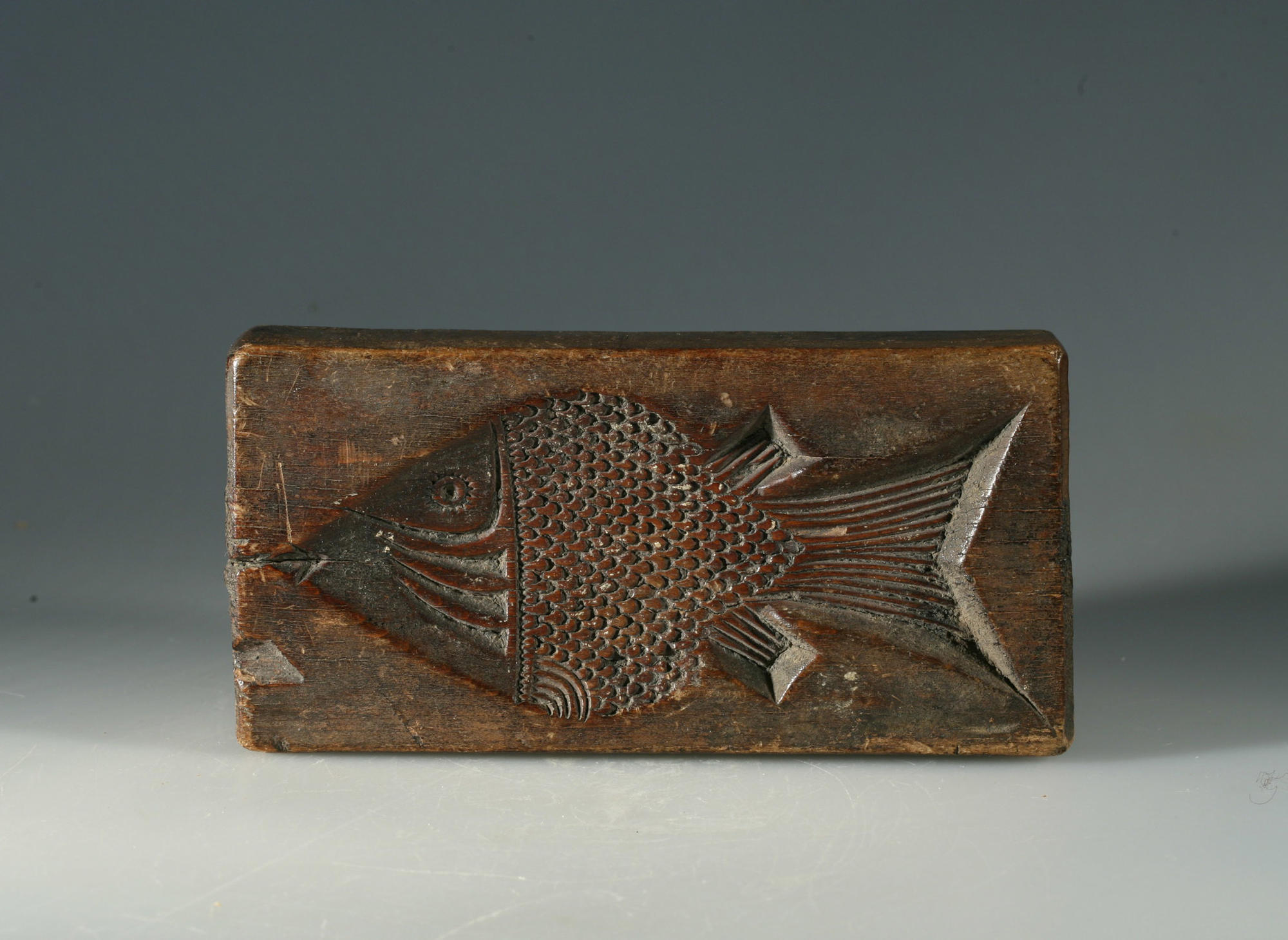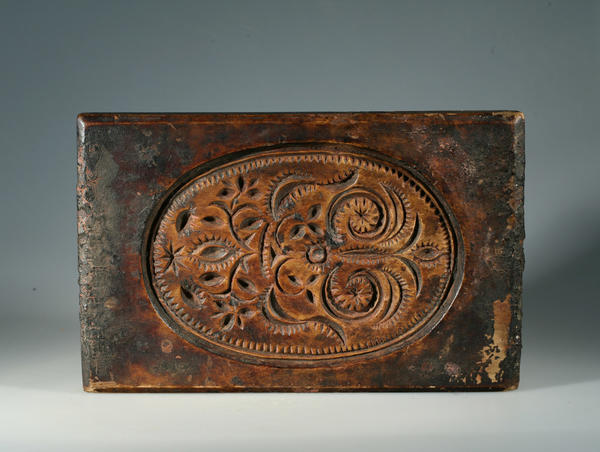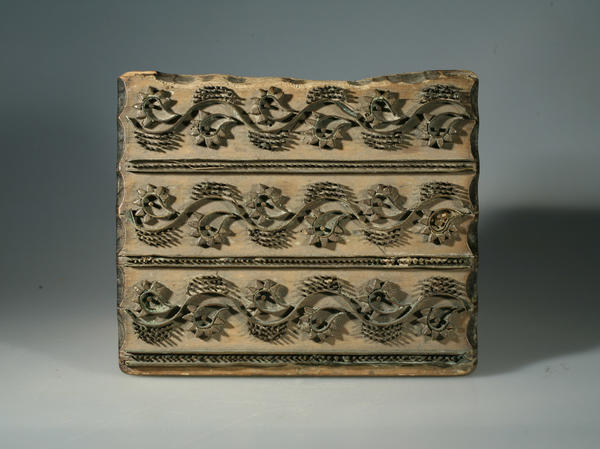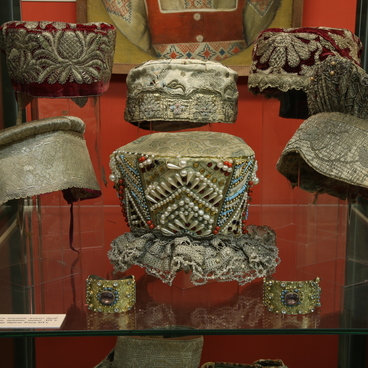Carved wood boards to make gingerbread were popular in the Urals in the 19th century. An embossed drawing was carved on the board, and the dough was tightly pressed against it. The ornament revealed on the face side of the gingerbread.
#4
Gingerbread Moulding Boards
#5
#17
Manufacture
#15
Peoples of the Urals transferred their craftsmanship of incised wood carving from generation to generation. This craftsmanship required not only skill, but also imagination. The carver was supposed to imagine the look of the moldboard form details after imprinting on the dough.
#6
Gingerbread moulding boards were made of hardwoods: birch, lime, walnut, maple, pear. Before carving, the craftsman cured the wood in the shade under natural temperature. Then a plate of about five centimeters was cut out and an image was carved on it. To make service life of the board longer, after gingerbread moulding, the board was boiled in oil. This allowed to quickly remove dough residues from the board. With proper care, boards were operational for over seventy years.
#16
First mention
#7
The first reference of carved boards dates back to the 17th century, when overseas spices started to appear in Russia. The German merchant Tönnies Fenne, in his Russian-German Dictionary of 1607 included the word ‘p’pryanik’ (the Russian for gingerbread) to denote the honey cake with pepper and other spices.
#14
Using
#8
In old days, ornamental gingerbread was not only tasty and the cheapest sweets: it also performed a ritual function. That dessert was compulsory for all religious holidays, weddings and name days. When first Christmas trees appeared in Russia, gingerbread cakes were put up the tree for decoration. In mid-19th century gingerbread started to be manufactured by confectionary plants. The carved wood board was a must in household and industrial gingerbread making. Baked gingerbread cakes were coated with multicolor frosting, thus making the cakes an item of decorative and applied arts.
#9
Carved moulding boards were manufactured up to the end of the 19th century.
#12
Tray boards
#19
Tray Gingerbread Moulding Boards
#10
They were of two kinds: tray boards were larger. They had a round or rectangular frame with an ornamental border. Inside the frame, a picture of a bird, an animal or a kitchenware item (e.g., a jar or a samovar).
#13
Picture boards
#20
Picture Gingerbread Moulding Boards.
#11
On picture boards there was a drawing that consisted of various symmetrical elements. To achieve symmetry, the carver artist carved a mirrored image. The images represented tree branches, plants, flowers, fruits, fairy tale subjects and geometric patterns. The most popular were fish images and flower ornaments.
#3
In late 18th — early 19th century peasants from various Russian provinces on a massive scale moved to the Urals. Alongside with their household items, they brought to Siberia their traditions and recipes.
Samples of household items, among which there are three gingerbread moulding boards. The Middle Urals. Late 19th-early 20th century.
#21
O.E. Kler Sverdlovsk State Regional Ethnography Museum
читать дальшескрыть
00:00
00:00
1x
Gingerbread Moulding Boards
Время создания
19th century
Техника
Wood, carving
2
Открыть в приложении
Поделиться





